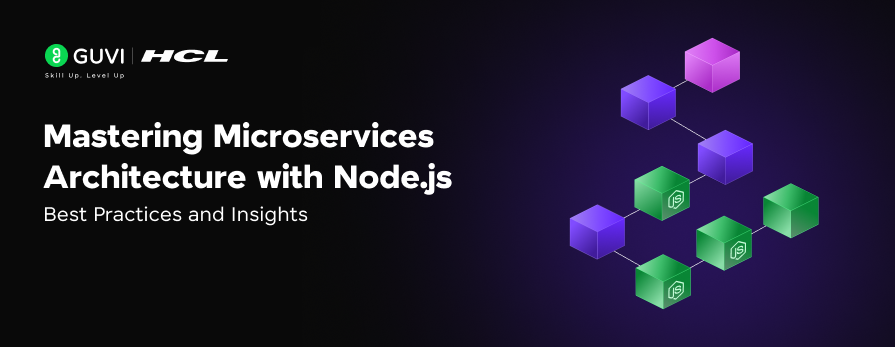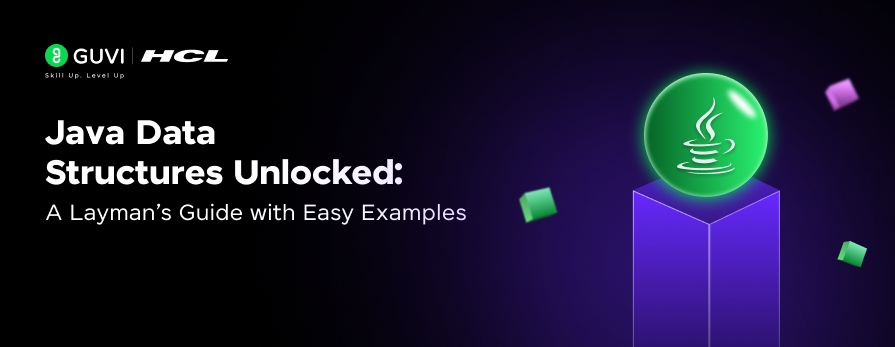
Mastering Microservices Architecture with NodeJS: Best Practices and Insights
Apr 10, 2025 2 Min Read 2000 Views
(Last Updated)
There are two major architectures in full-stack development that helps you on great deal in the backend. Those are microservices and monolithic architecture.
While both serve individual purposes, mastering each of them will put you on a pedestal over others. In order to do so, we will first be mastering microservices architecture with NodeJS.
This article will cover everything that you need to master microservices architecture with NodeJS. So, without further ado, let us get started!
Table of contents
- Overview of Monolithic Architecture
- Overview of Microservice Architecture:
- Why Microservices?
- Comparison Between Monolithic and Microservices Apps:
- Conclusion:
Overview of Monolithic Architecture
Let’s talk about monolithic architecture first before moving on to microservices architecture.
An older, more conventional approach to building applications is the use of monoliths. It follows an architectural pattern wherein an entire application is designed and developed as a single unit. In a monolith, each module and functionality is centralized.
The diagram above shows how multiple components from a single platform are integrated into a single program. All of the functionalities of our application are contained in a monolithic architecture.
Client – In responsible for both UI layout and HTTP server requests.
Router – In responsible for processing HTTP requests and redirecting users to the specific feature implementation depending on the URL.
Feature – In responsible for carrying out business logic for the application.
Database – In responsible for keeping data in storage.
Overview of Microservice Architecture:
Microservice architecture is a way to build software systems that organize a single application into a group of loosely coupled services. Microservices are collections of modular services that work together to efficiently run an application as a whole.
A microservices-architected application divides each component into independent components, each of which handles a single task. Each component may perform independently of the others.
The whole functionality of an application is developed by these modules interacting with one another via an Application Programming Interface (API).
The diagram above shows how various components combine together to build a single platform-based multiple programs or services. A single microservice contains only one feature of our application.
Client – Responsible for displaying UI and making HTTP requests to the server.
API Gateway – Responsible for handling HTTP requests and authentication, request routing, monitoring, and so on.
Service – Responsible for maintaining single-feature business logic.
Router – Responsible for redirecting to the particular feature implementation based on URL.
Feature – Responsible for doing application business logic.
Database – Responsible for storing data.
Why Microservices?
There are a lot of differences between Monolithic and Microservices architecture but the components and services of microservice applications are independent. More flexibility is available because each service may be implemented and updated independently.
Any specific service is affected by microservices applications; the entire solution is not reflected in them. Building a huge application with many modules is a good fit for microservice architecture; this is the ideal approach.
Comparison Between Monolithic and Microservices Apps:
| Monolithic architecture | Microservice architecture |
| A single server or service is used to build a monolithic application. | A microservices application consists of several services, each of which performs on its own independently. |
| Monolithic takes more time because we need to check the whole part of the server side. | The microservice architecture is incredibly flexible. |
| Build and deploy implementations are more complex | Microservices take very less time-consuming to build and deploy the app. |
Conclusion:
In conclusion, your app’s performance can be enhanced by using microservice architecture, a distributed service strategy planned to overcome the constraints of traditional monolithic architectures.
Microservice architecture implements a divide-and-conquer strategy in software design, which provides lots of advantages.






















![Top 20+ React Interview Questions and Answers [2025] 4 Top React Interview Questions](https://www.guvi.in/blog/wp-content/uploads/2022/01/Interview-Questions-1.png)
![What is ReactJS? A Beginner's Guide [2025] 5 what is reactjs](https://www.guvi.in/blog/wp-content/uploads/2025/04/what-is-reactjs.webp)
![What Does a Front End Developer Do? A Beginner’s Guide [2025] 6 Feature image - What does a Front End Developer do A Complete Guide](https://www.guvi.in/blog/wp-content/uploads/2024/02/Feature-image-What-does-a-Front-End-Developer-do-A-Complete-Guide.webp)







Did you enjoy this article?